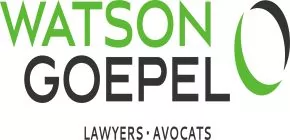Who Requires WorkSafe BC Coverage
Employers are usually familiar with the legal requirement to obtain WorkSafe BC coverage for their employees. However, businesses are actually required by law to ensure that all "workers" performing work or services for their business are insured by WorkSafe BC.
Establishing what type of work requires WorkSafe coverage involves some analysis as "worker" is a broadly defined term within the Workers Compensation Act (the "Act"). The definition includes any person "...who has entered into or works under a contract of service or apprenticeship, whether the contract is written or oral, express or implied, and whether by way of manual labor or otherwise."
A "worker" includes employees who work exclusively from home (even in sedentary positions for offshore employers). It includes apprentices. It may also include contractors (including "independent contractors"), sub-contractors, and sometimes even self-employed owners or partners of a proprietorship that provide work-like services as a contractor or other trade in a larger project.
Who is Responsible to Ensure a Worker or Contractor is Insured with WorkSafe?
Section 258 of the Act makes businesses jointly responsible for premiums in contractor relationships.
It is not enough protection for a business to state in written contracts with service providers or contractors that it is the responsibility of the contractor or independent contractor or other type of service provider to obtain its/their own WorkSafe insurance and be in "good standing" with WorkSafe BC.
To unequivocally protect itself from liability, a business should obtain proof that an entity (including an "independent contractor") is "in good standing" with WorkSafe BC. This can be done either by requesting the contractor or service provider provide a clearance letter from WorkSafe BC or by the business obtaining the clearance letter directly from WorkSafe BC through WorkSafe BC's online portal.
Clearance letters are documents issued by WorkSafe BC which will outline whether a company is in "good standing" with WorkSafe BC. Some clearance letters can be obtained by ordering through the portal, however, certain types of clearance letters (including a clearance letter related to the buying of the assets of a business) will require a business to contact WorkSafe BC directly.
The Risk of Failing to Ensure Contractors are In Good Standing with WorkSafe BC
If employers do not obtain clearance letters from service providers or contractors, then they may find their businesses subject to an assessment by WorkSafe for unpaid premiums or other levies which can extend back many years, with interest. In addition to retroactive premiums employers could be assessed a penalty by WorkSafe BC for the failure to ensure coverage. Depending on how many service providers, contractors or workers, WorkSafe BC deems to have been a business' responsibility these assessments can run from nominal amounts to greater than hundreds of thousands of dollars.
Due Diligence
Businesses should be aware that Section 256 of the Act makes new owners/employers of a business liable for any deficiencies in an assessment of the previous owner of the business. In tandem with that section, Section 258.1 of the Act makes directors of a corporation jointly and severally liable with the business for any assessments. These powers make it imperative for any person interested in purchasing a business, to obtain clearance letters directly from WorkSafe BC before any money changes hands.
*Legislation is changing all the time. Readers should not rely on the information in this blog without double-checking if there have been any further legislative changes since the posting of the blog.
The content of this article is intended to provide a general guide to the subject matter. Specialist advice should be sought about your specific circumstances.

